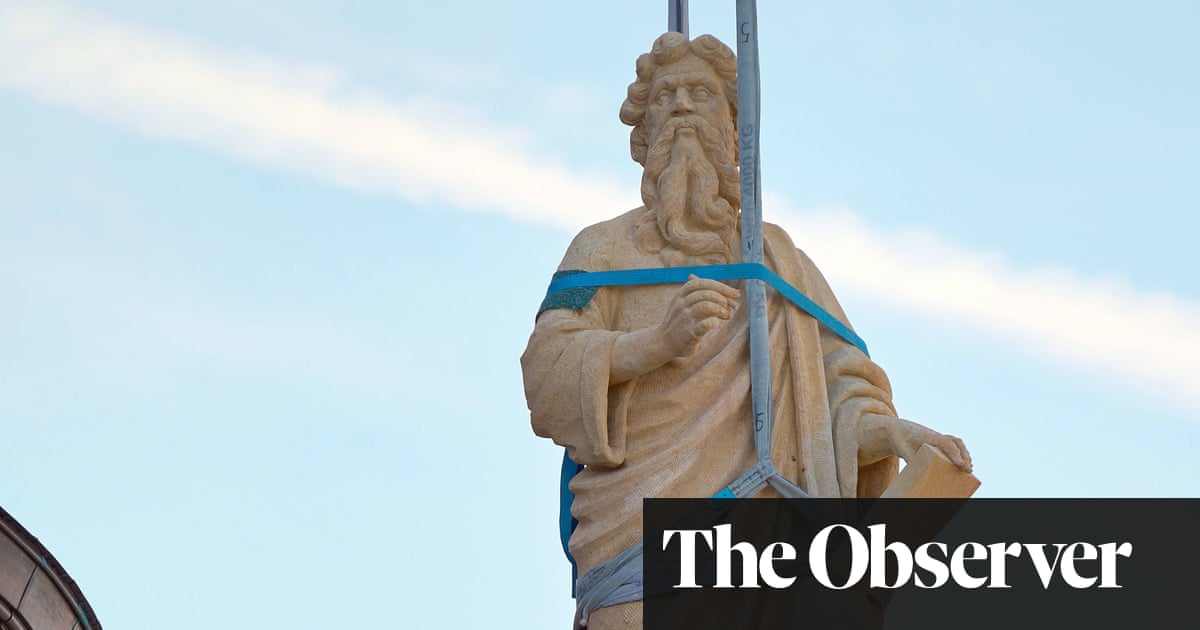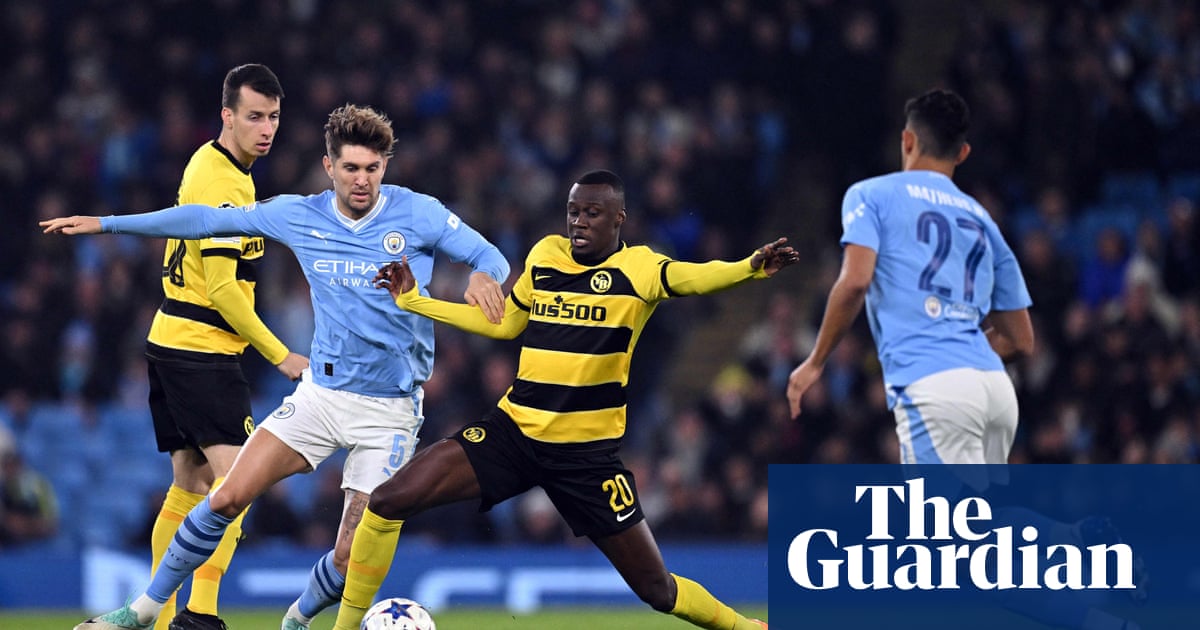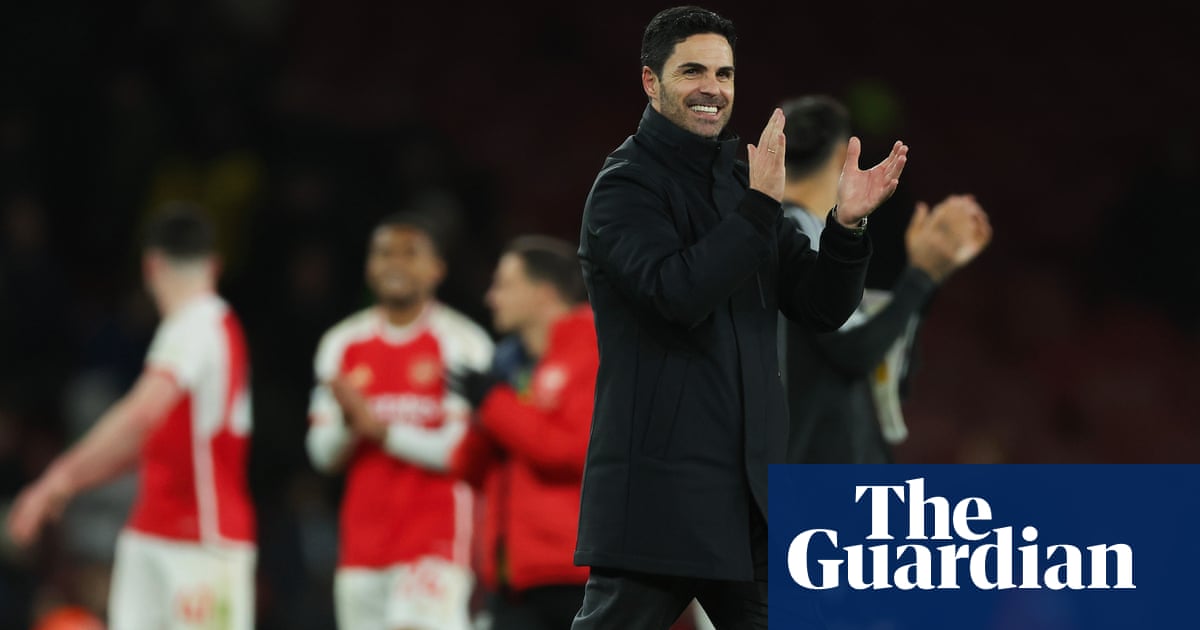
Silently towering into the grey Berlin sky, the latest addition to the German capital’s skyline is easily missed by passengers passing along the Unter den Linden boulevard below. Eight statues of Old Testament prophets, each more than 3 metres tall and weighing 3 tonnes, were installed last week in a circular formation around the cupola of the palace in the centre of the metropolis.
Whether these wise men made of sandstone are mere innocent bystanders overlooking the ebb and flow of German history or warriors in a culture war over the country’s future, however, has been the subject of heated debate. Critics say the erection of Isaiah, Ezekiel and co is emblematic of the silent manipulation of a prestige architecture project by a shady group of donors with nationalist leanings.
“It appears that we are dealing with a targeted infiltration of the Berlin palace by fundamentalist rightwingers who want to turn it into symbol of a Christian and thereby ‘white’ ethnic Germany,” said Jürgen Zimmerer, a professor of global history at the University of Hamburg, who drew attention to the Islamophobic comments of at least one of the statues’ donors.
Berlin’s Stadtschloss has been a Janus-faced project from the start, looking backwards and forwards at the same time. When Germany’s parliament voted in 2002 to build a replica of the 18th-century palace that had been demolished by East Germany’s socialist government after the second world war, it decided that the east-facing facade should be kept in a modernist grid-style.
To counteract the Prussian pile’s nationalist symbolism, the inside of the building was to house the Humboldt Forum, a collection of African, Asian and other non-European art that opened its doors to the public in 2021.
Most of the baroque exterior, however, was to be rebuilt in a like-for-like style to please admirers of the conservative Prussian nobility that formed and dominated the German empire in 1871. In a bid to reduce the burden on the public purse, it was to be paid for by these enthusiasts too: while the cost of the Berlin palace’s core and interior was covered by the state, its decorative exterior was to be financed through an association of private donors alone.
The lack of a proper vetting system built into this unusual arrangement, critics say, is now backfiring. Since the official reconstruction was completed in 2020, the donors’ association has gradually added optional decorative elements that introduce further religious overtones to an already symbolically overburdened building.
A Christianised dome was hoisted atop the palace in 2020, complete with a band of text, compiled by 19th-century King Friedrich Wilhelm IV, calling on all peoples to submit to Christianity. Last year, a large coat of arms with the Prussian black eagle was added above the Humboldt Forum’s west-facing entrance.
Plans for modern architectural flourishes intended to contextualise Germany’s problematic history – such as a neon sign obscuring the band at night or large letters spelling out the word “Doubt” – have meanwhile fallen by the wayside due to a shortage of public finances and lack of political will.
Historian Zimmerer said the use of Christian elements was particularly problematic given the ethos of the museum inside the palace, whose galleries work hard to contextualise the heritage of the objects on display. On Friday, the Humboldt Forum opened a new show about looted art from the Napoleonic conquests, the Nazi period and the colonial era.
“And then you have this facade which is utterly uncritical in its nostalgic adulation of the Protestant Christianity that the German empire drew its belief in its own supremacy from,” said Zimmerer.
“The joining-up of protestantism and imperial ambition under the Hohenzollerns was no laughing matter,” said Philipp Oswalt, an architectural historian at Kassel university who has been one of the Berlin Palace’s most vocal critics. “If we talk about Islamist holy warriors now, then these were Christian holy warriors.”
The ideological leanings of some of the donors have come under renewed scrutiny. As cranes hoisted up the sandstone statues last week, it became public that the figure of the prophet Daniel had been paid for in part by Vera Lengsfeld, a former East German dissident who claimed in a 2019 blog post that Germany was “replacing its own population”, echoing the nationalist far right’s “great replacement” conspiracy theory.
Hans-Ulrich Kopp, a building developer from Stuttgart, was revealed in the Saturday news magazine Der Spiegel as another donor of decorative flourishes. Kopp has previously been identified as one of the participants of a controversial meeting between far-right politicians and neo-Nazi activists in Potsdam last November.
A donor’s plaque for the late banker Ehrhardt Bödecker was removed from the palace’s portal in 2021, after writings came to light in which he had opposed parliamentary democracy and disputed that 6 million Jewish people died in the Holocaust.
The founder of Junge Freiheit, a weekly newspaper associated with the German new right, is listed as a financial contributor on the website of the Berlin palace donors’ association. Its treasurer represents the far-right Alternative für Deutschland party in Berlin.
The donors’ association claims to have vetted financial contributions for cash injections from the radical right, but has conceded that the identity of individuals behind €25m could not be determined.
In a statement, Humboldt Forum said it was regrettable that some of the donations that had come via the donors’ association had originated from a “nationalist conservative and even antidemocratic milieu that we consider to be problematic”.
But it insisted that these “problematic” donations only made up a fraction of the overall contributions to the facade’s restoration. As one of a hundred donors who had contributed to the statue of the prophet Daniel, Lengsfeld’s donation was “practically irrelevant”, and the symbolism of a Jewish prophet from the Old Testament far from overtly Christian at any rate. A tightening of regulations in 2021 meant that no more anonymous donations would be allowed in the future.
A Humboldt Forum spokesperson also rejected the allegation that donors had been able to actively shape the facade’s exterior, saying that while some elements had not been part of the original 2008 competition proposal by Italian architect Franco Stella, they had been included in a 2010 plan that had been welcomed by the Bundestag.
Palace critic Oswalt disagreed. “It’s quite simple: if there had been no money from private donors, elements like the cupola would never have been built,” he said.
“This isn’t about whether reconstructing historic buildings is right or wrong per se. The point is that reconstruction isn’t a neutral scientific process, but a cultural programme that comes with certain values, and we should debate whether these values still represent us. To pretend that this is only a debate about beauty and ‘authentic’ history is to play straight into the playbook of the far right.”












